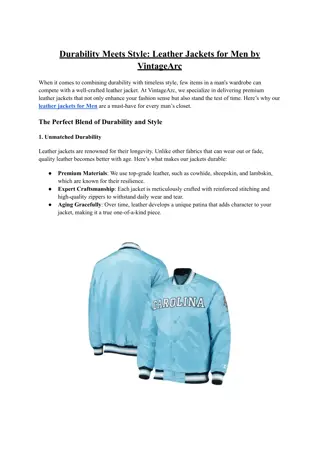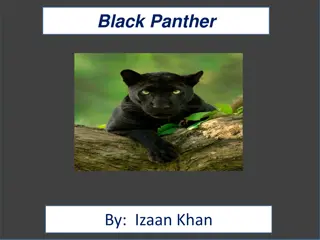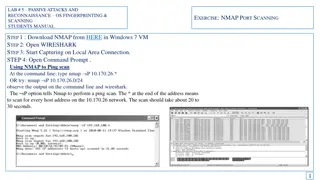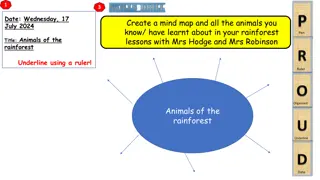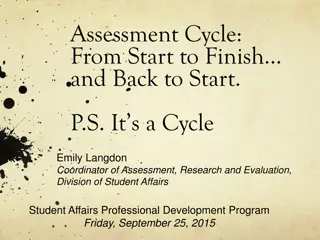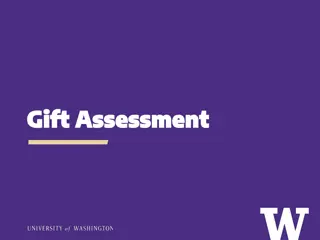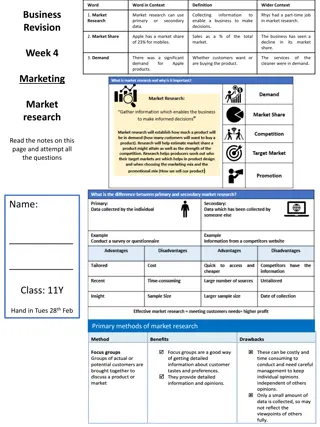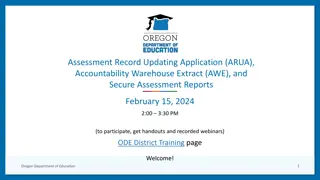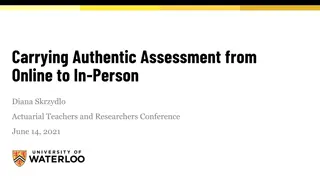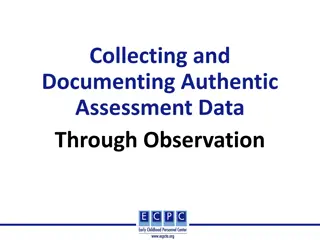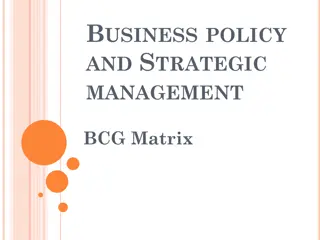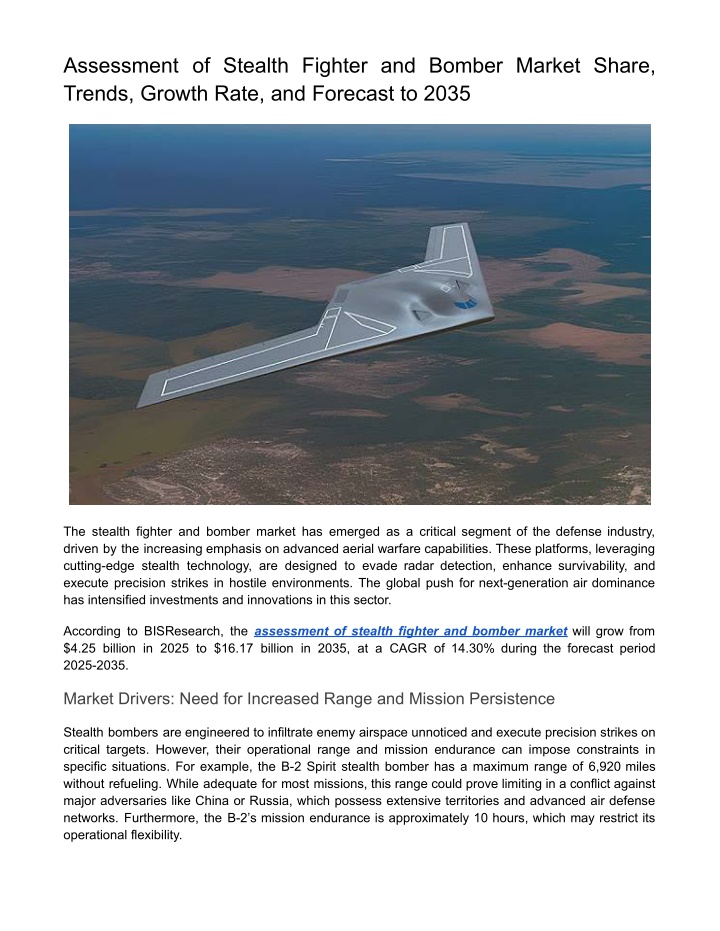
Assessment of Stealth Fighter and Bomber Market
The assessment of stealth fighter and bomber market will grow from $4.25 billion in 2025 to $16.17 billion in 2035, at a CAGR of 14.30% during the forecast period 2025-2035.nnRead Report Overview: //bisresearch.com/industry-report/assessment-st
Download Presentation

Please find below an Image/Link to download the presentation.
The content on the website is provided AS IS for your information and personal use only. It may not be sold, licensed, or shared on other websites without obtaining consent from the author. If you encounter any issues during the download, it is possible that the publisher has removed the file from their server.
You are allowed to download the files provided on this website for personal or commercial use, subject to the condition that they are used lawfully. All files are the property of their respective owners.
The content on the website is provided AS IS for your information and personal use only. It may not be sold, licensed, or shared on other websites without obtaining consent from the author.
E N D
Presentation Transcript
Assessment of Stealth Fighter and Bomber Market Share, Trends, Growth Rate, and Forecast to 2035 The stealth fighter and bomber market has emerged as a critical segment of the defense industry, driven by the increasing emphasis on advanced aerial warfare capabilities. These platforms, leveraging cutting-edge stealth technology, are designed to evade radar detection, enhance survivability, and execute precision strikes in hostile environments. The global push for next-generation air dominance has intensified investments and innovations in this sector. According to BISResearch, the assessment of stealth fighter and bomber market will grow from $4.25 billion in 2025 to $16.17 billion in 2035, at a CAGR of 14.30% during the forecast period 2025-2035. Market Drivers: Need for Increased Range and Mission Persistence Stealth bombers are engineered to infiltrate enemy airspace unnoticed and execute precision strikes on critical targets. However, their operational range and mission endurance can impose constraints in specific situations. For example, the B-2 Spirit stealth bomber has a maximum range of 6,920 miles without refueling. While adequate for most missions, this range could prove limiting in a conflict against major adversaries like China or Russia, which possess extensive territories and advanced air defense networks. Furthermore, the B-2 s mission endurance is approximately 10 hours, which may restrict its operational flexibility.
Market Challenges: Cost Effectiveness of Next-Generation Stealth Bombers The cost-efficiency of next-generation stealth bombers presents a significant challenge in evaluating the stealth fighter and bomber market. These state-of-the-art aircraft integrate advanced technologies, including radar-evading materials and sophisticated avionics, which substantially increase research, development, and production costs. Rigorous testing and evaluation processes, along with the precision engineering required for their manufacturing, further drive up expenses. To mitigate these challenges, defense contractors and governments are adopting strategies such as leveraging advanced manufacturing techniques like 3D printing to lower production costs, implementing modular designs for streamlined upgrades, and boosting investment in research to develop more economical stealth technologies. Request A Detailed Sample on the Assessment of Stealth Fighter and Bomber Market Assessment of Stealth Fighter and Bomber Market by Region North America is projected to lead the stealth fighter and bomber market with a CAGR of 14.58%, driven by robust defense budgets and military modernization efforts. Asia-Pacific is gaining momentum due to rising demand for ISR capabilities and regional tensions. Favorable government policies in North America and Europe will further boost market growth from 2025-2035, solidifying these regions as key hubs for developing advanced stealth aircraft to address evolving security challenges. Technological Trends in Assessment of Stealth Fighter and Bomber Industry AI-Driven Operations: AI integration in stealth aircraft enhances decision-making, situational awareness, and autonomous capabilities. Hypersonic Weapons Compatibility: Developing platforms capable of deploying hypersonic missiles to counter emerging threats. Sustainable Materials: Exploring eco-friendly radar-absorbent materials to align with global sustainability goals. Market Opportunities: Meeting Joint All-Domain Command and Control (JADC2) Requirements Companies engaged in the development, production, and maintenance of stealth aircraft can leverage this opportunity by tailoring their offerings to meet the specific demands of JADC2. This includes advancing stealth capabilities, improving communication systems, enhancing data-sharing functionality, and ensuring seamless interoperability with other defense platforms. By delivering solutions aligned with these requirements, companies can secure contracts from military agencies and governments aiming to strengthen their defense systems in line with the JADC2 strategy. Additionally, as military forces increasingly emphasize integrated, network-centric warfare, businesses specializing in stealth aircraft can partner with technology firms to provide comprehensive solutions that support the JADC2 framework. Download Our ToC: Click Here!
According to Principal Analyst, BIS Research The market for next-generation stealth fighters and bombers is primarily propelled by advancements in military technology, shifting geopolitical landscapes, and evolving defense spending patterns. These aircraft, defined by their minimized radar signatures and cutting-edge avionics, signify a substantial enhancement in military capability. Their development and acquisition are shaped by various factors, including national security priorities, technological progress, budgetary considerations, and the dynamics of international relations.


